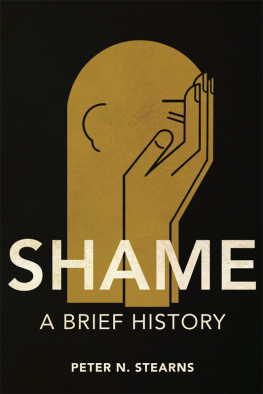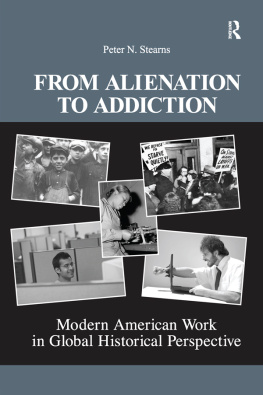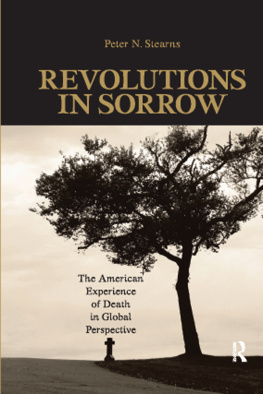Preface
Shame is a disputed emotion, which makes its history particularly interesting and unquestionably challenging. All emotions prompt debate, of course: is a society encouraging too much anger? Or unduly manipulated by appeals to fear? Are personal relations complicated by unrealistic expectations of love? But the swirl around shame reaches deeper still, involving core definitions, uncertainty about current trajectories, and outright arguments over functions and impacts.
Putting the case simply: in contemporary U.S. society a host of commentators, from several perspectives, condemn shame and urge its reduction or, were it possible, elimination; but a smaller yet vocal group, looking at various kinds of current behaviors, loudly urges more use and acceptance of shame. In a related dispute, some observers (whether hostile or favorable to shame) see the emotion in clear decline at least in modern U.S. and Western European societies, while others (mainly hostile) worry about persistently high levels and objectionable new sources for the emotion. And, finally, scholars themselves disagree about how to define the emotion itself, and particularly about whether to emphasize the individual experience of shame or the emotions larger role in community life. Where do these disagreements come from? What impact do they, or should they, have?
There is even a recurrent cross-cultural debate. Western observers have frequently touted the advantages of a guilt-based culturewhich, they
This text frequently refers to Western society, meaning primarily Western Europe and the United States, although Australia, New Zealand, and Canada often fit. We deal only rarely with Latin America, where a few indications suggest traditional forms of shame lasted longer than in Europe and the United States. Exploring Latin American emotions history more fully, shame included, is highly desirable in the future, and of course specialists debate whether Latin America is best termed Western or not.
Definitions of shame, and its functions and drawbacks, are inevitably complicated by several factors. Shame is not a basic emotion in the sense of being wired into human biology from infancy. Indeed, a key question involves what basic emotions it does embrace: it may prompt sadness, it certainly may express disgust, but it may also generate anger. (Theres no single facial expression associated with shame, though we might consider what shame-faced involves; and some cultures offer specific facial definitions.) Sorting the possible combinations is no easy task, andthis is where history most clearly contributesthey have unquestionably changed over time.
Problems of language enter in strongly, as is so often the case in emotions study. As we see throughout this book, shame is defined variously in different societies and in different time periodssometimes for example sharply distinguished from guilt, as in contemporary English, but in other cases simply merged. A perceptive article notes the difference, even in English, between shame as noting a failure to do ones duty (arguably a dominant view in the seventeenth and eighteenth centuries) and a more modern sense that shame reflects a desire to be lovable. Shifts and divergences in word use often reveal key aspects of shame, but their imprecision also complicates discussion and further reveals the challenge of core definitions.
Shame also hovers between the individualwhich is where most emotions analysis centersand the social, and any full assessment must embrace both aspects. The chapters that follow address both shame and shamingthe former as the emotion the individual encounters, the latter as what groups or group standards impose. Even when shame is defined as a personal experiencethe most common emphasis in many current psychological studiesit operates against some sense of audience, and various social groupings clearly play their own role in defining and using shame, regardless of individual experience. Its no accident, to take one of a host of contemporary examples, that California in its current water crisis has taken to drought shaming as a means of controlling water usea clear case of perceived social need.
Further, shame is one of several self-conscious emotions, along with guilt and embarrassment. How can it best be distinguished from its neighbors? One analyst declared that embarrassment is simply the contemporary version of shame, which in itself has fallen into disreputethis is doubtful, but interesting in indicating a fuzzy boundary. A few psychologists, focused on the individual experience of shame, see it as essentially equivalent to guilt, and there are studies suggesting that contemporary Americans sometimes see an internally focused shame as essentially a guilt equivalent. Other research, however, particularly when directed toward societies that seem to value shame but downplay guilt, but also in judging contemporary U.S. emotional strategies, see clear distinctions between shame and guilt, to the great advantage of the latter. The pathway for shame is not clearly marked.
Finally, there are disputes about shames impact. A social scientist offers a recent quotation by an international lobbyist: shame is for sissies, and goes on to lament the decline of shame in political and financial circles. The Wall Street banker associated with an investment scandal pops up two months later heading another corporate board: where is shame when we need it? There is simply no agreement about where this emotion stands and what its constructive uses are, if any.
A history of shame can hardly pretend to sort all this out. It can help on the definitional side: at various points in time, shame has embraced somewhat different elements, particularly in the balance between community reliance and individual experience. Further, while historical analysis cannot posit tidy boundaries between shame and the other self-conscious emotions, it can assist here too. Much more clearly, a history of shame, like constructive emotions history more generally, can center squarely on the question of trajectory, or change over time. Its quite certain, as we discuss, that shame in some senses declined in U.S. society between 1850 and the 1960s but has recently revived; exploring this complex track addresses the resultant confusion over dominant current trends quite directly. And a historical treatment also contributes, at least, to sorting out some of the uncertainties over shames function. A better understanding of shame-based societies in the past, as well as in contemporary comparisons, must involve a more sensitive grasp of how and why shame can work usefullywhile also incorporating and potentially embellishing the role of cultural variables. But reviewing the treatment of change over time, and particularly the tensions between the rise of individualism and the persistence of shame, also helps us explore the emotions negative features. Shame may well be more damaging in some current contexts than it was traditionally.

 This book is printed on acid-free paper.
This book is printed on acid-free paper.










